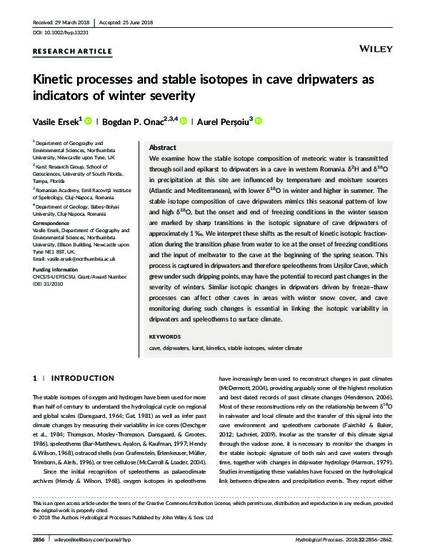
- cave,
- dripwaters,
- karst,
- kinetics,
- stable isotopes,
- winter climate
We examine how the stable isotope composition of meteoric water is transmitted through soil and epikarst to dripwaters in a cave in western Romania. δ2H and δ18O in precipitation at this site are influenced by temperature and moisture sources (Atlantic and Mediterranean), with lower δ18O in winter and higher in summer. The stable isotope composition of cave dripwaters mimics this seasonal pattern of low and high δ18O, but the onset and end of freezing conditions in the winter season are marked by sharp transitions in the isotopic signature of cave dripwaters of approximately 1 ‰. We interpret these shifts as the result of kinetic isotopic fractionation during the transition phase from water to ice at the onset of freezing conditions and the input of meltwater to the cave at the beginning of the spring season. This process is captured in dripwaters and therefore speleothems from Urșilor Cave, which grew under such dripping points, may have the potential to record past changes in the severity of winters. Similar isotopic changes in dripwaters driven by freeze–thaw processes can affect other caves in areas with winter snow cover, and cave monitoring during such changes is essential in linking the isotopic variability in dripwaters and speleothems to surface climate.
Hydrological Processes, v. 32, issue 18, p. 2856-2862
Available at: http://works.bepress.com/bogdan-onac/114/
